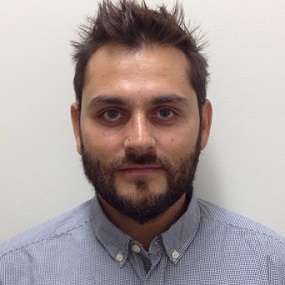
The need for liver transplantation is expected to rise by 23 percent over the next two decades, but the supply of transplantable livers is inadequate today, leaving patients in need of liver transplantation with increasingly longer waiting periods and worse prospects for survival. To save the lives of more patients suffering from liver diseases, patients, their families, doctors, and researchers are all looking toward improving liver cell transplantation using autologous (patient-donated) liver cells.
“Liver cell therapy has been under intensive investigation for decades and is a promising alternative to liver transplantation,” said study co-author Alejandro Soto-Gutierrez, MD, PhD, an Associate Professor of the University of Pittsburgh Department of Pathology and an affiliated faculty member of the McGowan Institute for Regenerative Medicine, Children’s Hospital of Pittsburgh of UPMC, and the Thomas E. Starzl Transplantation Institute. “However, liver cell transplantation has, to date, not been reliable enough to replace liver transplantation.”
According to the authors, significant barriers limits the broader implementation of liver cell therapy. First, sources are lacking for liver cells (hepatocytes) appropriate for transplantation; second, the inability to monitor the function or rejection of transplanted cells is a serious hurdle.
“The ability to use cells induced from the kinds of cells able to differentiate into a great variety of cell types will dramatically facilitate cell therapies for patients with some liver disorders,” said Dr. Soto-Gutierrez. “Our objective in this paper was to evaluate the current state of efforts aimed at developing patient self-donated liver cells for transplantation.”
The authors investigated several recent technological advancements that may change the cell therapy landscape. The most promising advancements they evaluated included:
- the promise found in the ability to generate hepatocyte-like cells (HLCs) from cells called pluripotent stem cells (iPSCs);
- the ability to use gene ‘editing,’ using the CRISPER/CAS9 system (CRISPR is an abbreviation of Clustered Regularly Interspaced Short Palindromic Repeats) to either correct loss of gene function or deficient gene expression; and
- using living animal’s bodies (in vivo) as ‘bioreactors’ to make and mature large numbers of functional human hepatocytes for transplantation.
However, each process and technology has its advantages and limitations, and each requires more research and development.
“Unfortunately, stem cell-derived HLCs do not possess all of the functions of mature hepatocytes,” explained Dr. Soto-Gutierrez. “Too, with gene editing, there is risk for off-target gene editing in non-target genes or in tissues. That risk can be minimized in the near future. Third, larger, more costly mammals are needed to produce human hepatocytes.”
The authors noted that, in many laboratories, researchers are investigating what might promote better hepatocyte differentiation and maturation.
“Successful liver cell transplantation will require optimizing best cell functions, overcoming limitations to cell numbers and safety, as well as a number of other challenges that currently limit the success of the three approaches we discussed in our paper,” concluded the authors. “Collaboration among scientists, clinicians and industry will be critical for generating new autologous stem cell-based therapies to treat liver diseases.”
The focus, said the authors, is on several possibilities, including the use of growth factors, small molecules, and developing microenvironments in which cells can successfully mature.
“The authors have summarized these promising technologies with scientific rigor and have apprised us of where we stand with regard to the future of regenerative therapy for liver diseases,” said Prof. Frederic Lemaigre of the Université Catholique de Louvain, de Duve Institute, in Brussels, Belgium. “They have clarified which issues have been solved and have, without making unfounded promises, reminded us of challenges remaining.”
Read more…
Abstract (Biofabrication of autologous human hepatocytes for transplantation: how do we get there? Agarwal, Nandini; Popovic, Branimir; Martucci, Nicole J.; Fraunhoffer, Nicolas A.; Soto-Gutierrez, Alejandro. Gene Expression, The Journal of Liver Research; online August 24, 2018.)
